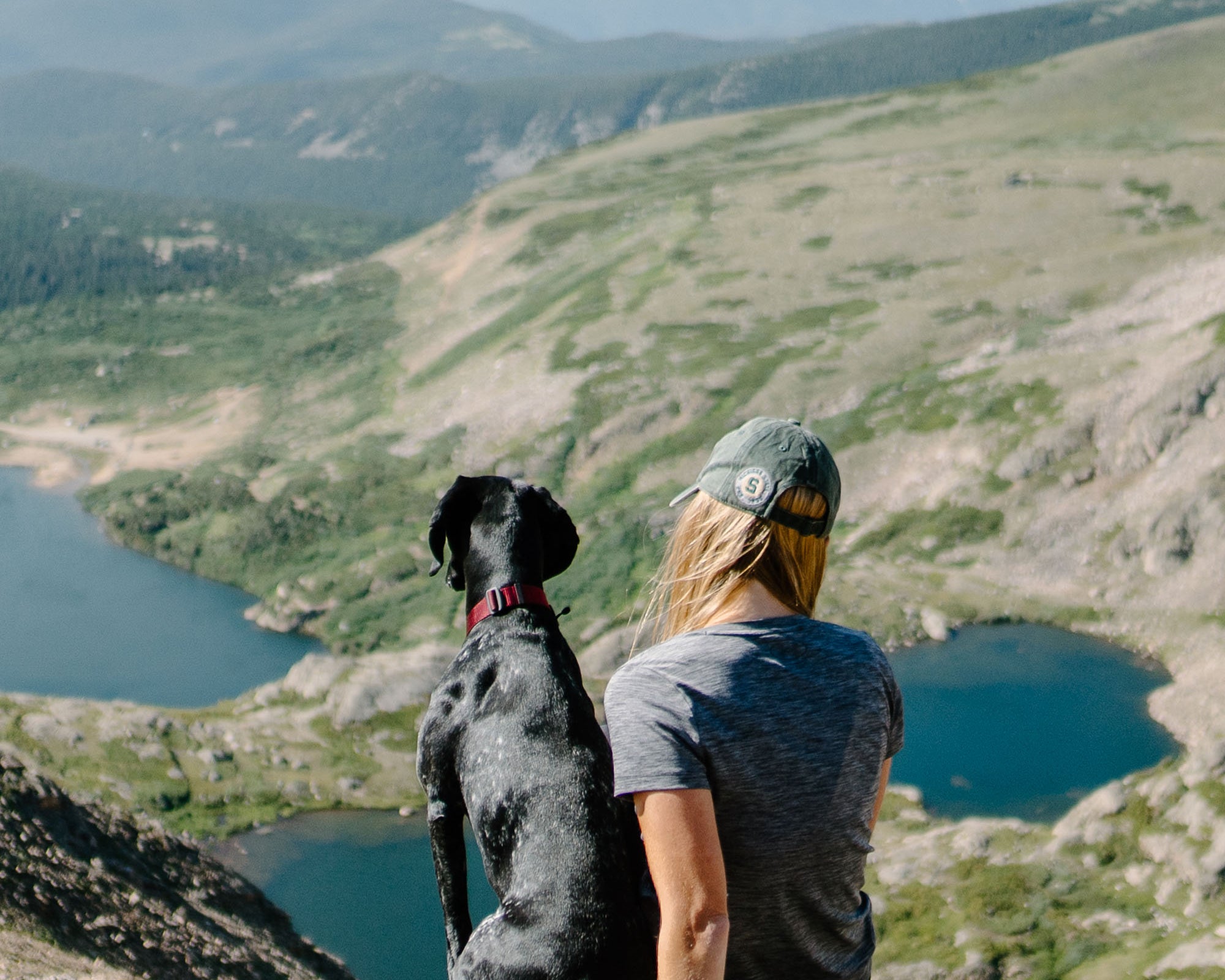Hitting the trails is always an adventure, but the joy of the trek is always more exciting when you can share it with your pup . The Atlas team put together these essential tips to help your dog release his inner mountain goat.
Do your recon.
Choosing your adventure isn’t as easy as just pointing to a spot on the map - successful hikes will require some thoughtful planning. While most trails are a blast for humans, only certain routes fit the bill for a safe, comfortable, and legal outing with your pup.
Although we here at Atlas wish all trails were dog-friendly, a surprising number of hikes don’t allow pups. Many dog owners are surprised to learn that the majority of trails in US National Parks are off-limits to our four-legged best friends. There are a few outstanding exceptions, though: Acadia National Park in coastal Maine, for example has over 100 miles of dog-friendly hikes, and Cuyahoga Valley National Park in Ohio is completely open to canines.
The National Park Foundation has made doing your dog diligence easy with their National Park Paws tool. There, you can search by state or site for thorough pet policies for all protected public land in the US. For county trail ordinances, your best bet is to search your local government pages for information on access and leash laws.

Make sure pups are allowed to be with you ahead of time.
Trek mindfully.
As we detailed in The Atlas Guide to Running with your Dog (link), leash manners are key for successful adventuring with your mutt. If you’re fortunate enough to be hitting a legal off-leash area, your pup should always be within sight and responsive to verbal commands. Some cities, like, Boulder, Colorado, even require a Voice and Sight Control class and license before your dog can venture into off-leash zones; look into local licensing requirements before you set out on an adventure.
Take a tip from the Boy Scouts and “leave no trace.” Most hikes worth the trek wind through areas meant to protect vegetation and avoid erosion. Leave a light pawprint by ensuring your adventurous pup sticks to the trail. Always carry poop bags and leave the trail better than you found it by packing out your dog’s waste. This way, your nature walk will be preserved for all pups to enjoy for years to come.
Tip: Stubborn dog who thinks a tug on the leash is merely a suggestion? Been there. That’s why we built the Lifetime Harness to withstand bull-headed adventure dogs - AND extreme trail conditions.

Practice safety for you AND your pup!
Watch out for bears! (and other calamities).
It’s a good idea to research wildlife and hunting laws in the area before your trek to better understand what hazards your pup might face on the trail. Moose on the loose? Keep more curious or prey-driven dogs on leash. Rattlesnakes afoot? Be vigilant about curious noses sniffing under rocks. Hunting season? Invest in a fetching orange vest for your dog to set him apart from the other beasts in the area.
Tip: The Lifetime Leash and Collar both come in a striking orange that hunters are trained to watch out for. Outfitting your animal in the matching set sends a clear signal: I AM NOT A DEER!
Don’t forget to prepare for the less visible hazards in the wild, too. Before you venture into the woods, check your dog’s medical records to ensure they’re up to date on leptospirosis and rabies vaccines. Tick and flea preventatives are non-negotiables - tick-borne Lyme disease is common and debilitating, and it only takes one bite to contract it.
Trails introduce very different terrain than your pup might be used to on his average stroll around the block. Soft dirt, gravel, and rock-hopping stress paw and leg muscles in new ways that can cause injury. If your dog is a novice trekker, start with an easier hike that involves less mileage, altitude, and technical terrain, then work your way up to the harder turf as your pup’s legs can handle it. This goes for the first hikes of the season, too - we’ve learned the hard way that a dog who dashed up a fourteener six months ago can easily pull a leg muscle on scree after a season of sitting in front of the fireplace.
Carry enough water for both you AND your pup. Hikes are more dehydrating than walks with no terrain, and unfamiliar trails can leave you and your canine companion more exposed to the elements than you anticipate. Bringing an energy bar for yourself? Pack some high-protein snacks for your pup while you’re at it.
Adventure on!
Anybody who has hiked with a dog will tell you: it is canine heaven. Watching your pup savor the smells of nature, romp gleefully up the trail, and reach the summit with a smile on his face will give you fresh appreciation for the journey. Like most experiences with dogs, hiking is better when you do it together.





























